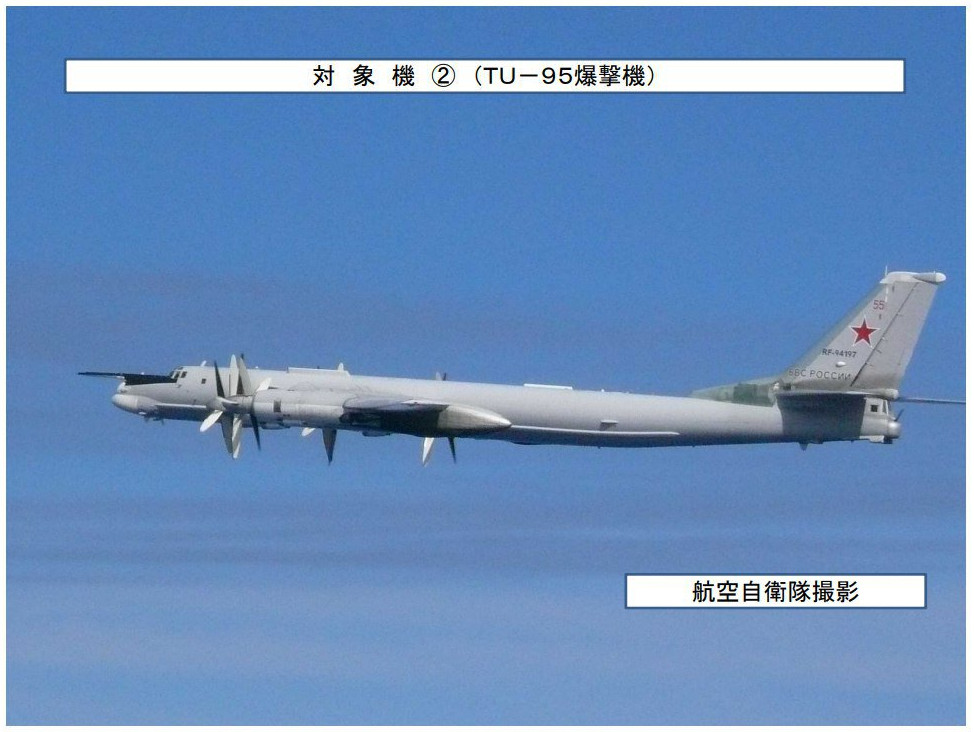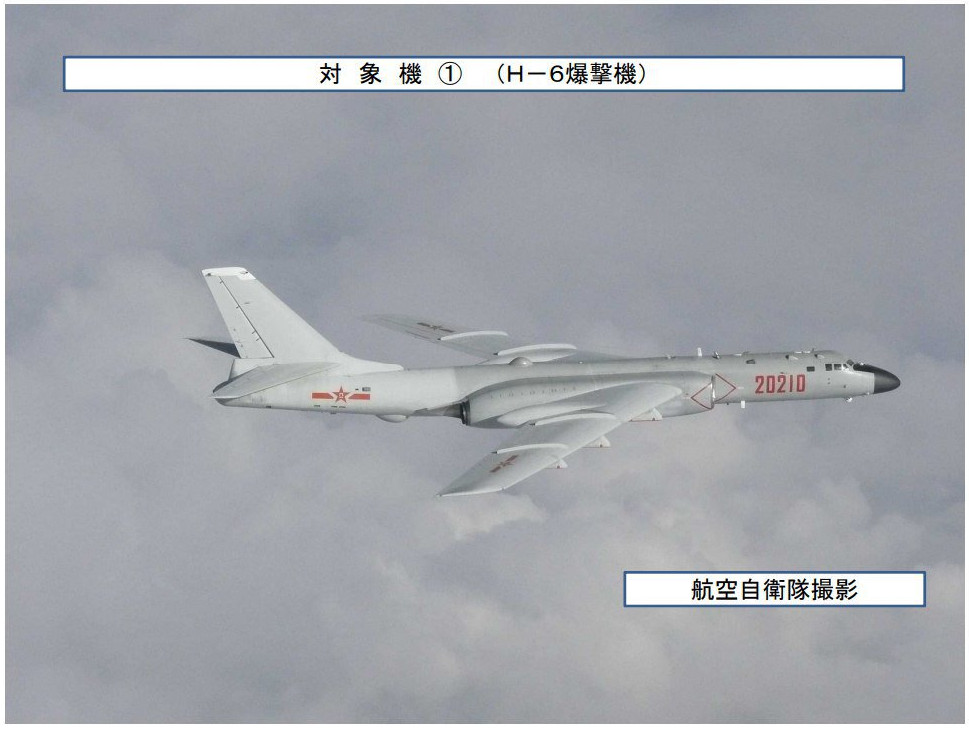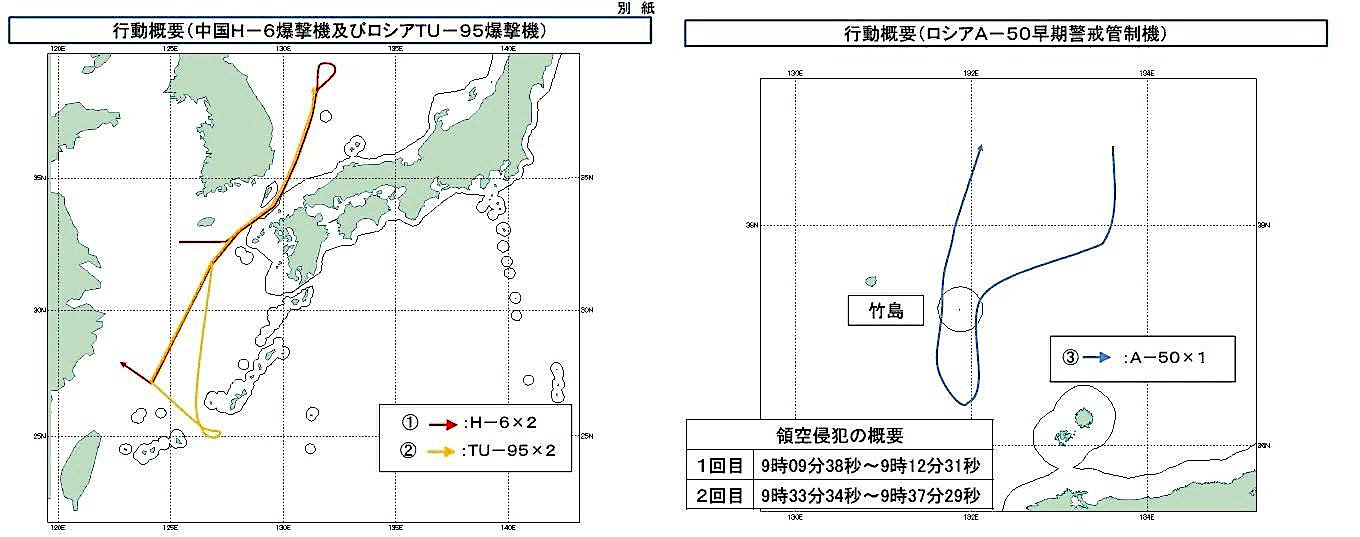Russia has disputed that one of its military aircraft violated South Korea’s national airspace over a small grouping of islets in the Sea of Japan, as well as reports that South Korean fighter jets fired approximately 360 20mm cannon shells in a series of warning shots during the altercation. The incident occurred during a joint Russian-Chinese aerial patrol involving two Tu-95MS Bear bombers and an A-50 Mainstay airborne early warning and control aircraft from Russia’s military flying together with a pair of China’s H-6K bombers.
The confrontation occurred on July 23, 2019, local time, as the Russian and Chinese aircraft flew into the South Korean Air Defense Identification Zone, or KADIZ, prompting the South Korean Air Force to scramble F-15K Slam Eagle and KF-16C/D Viper fighter jets, also sometimes referred to as F-16Ks, to intercept them. The incident turned more serious when the A-50 reportedly flew over actual airspace South Korea claims above the set of islets, which it refers to as Dokdo. Japan also claims these as its national territory, calling them collectively Takeshima, and registered its own complaint that the Mainstay had violated Japanese national airspace.
“The Air Force instantly deployed multiple jets, including F-15Ks and F-16Ks, and sent warning messages to it in accordance with operation manuals,” an unnamed officer from South Korea’s Joint Chiefs of Staff told the Yonhap News Agency. “But the plane [the A-50] did not respond, so one of our aircraft fired some 10 rounds of flares and 80 warning shots.”
The F-15K and the F-16K each carry a single M61A1 20mm Vulcan cannon, a six-barrel Gatling gun that fires up to 6,000 rounds per minute. A total of 80 warning shots would equate to just under a one-second-long burst from one gun.

The A-50 left, but returned again to the airspace above the islets relatively soon thereafter, prompting South Korean jets to fire another 10 flares and 280 warning shots, according to South Korean officials. South Korea says this is the first time a foreign aircraft has ever violated its national airspace since the end of the Korean War. Officials in Seoul made formal complaints to both the Russian and Chinese ambassadors to South Korea over the flights around Dokdo/Takeshima and in the KADIZ.
Japan’s Ministry of Defense subsequently released pictures of the A-50, seen at the top of this story, as well as the other Russian and Chinese aircraft, from its own intercepts. In addition, it provided a map that also asserted that the Mainstay had flown within the territorial limits around the islets. Japanese officials also lodged a separate complaint about the South Korean jets flying in airspace over what they claim as their national territory.



Russia has subsequently confirmed that its Tu-95MS bombers had flown through the KADIZ, but denied that they had violated any other country’s airspace or that any foreign combat aircraft had fired warning shots at them. They did confirm that South Korean jets had deployed flares, but that the Bears had ignored them since they were flying in international airspace.
“It is not the first time that South Korean pilots have unsuccessfully tried to disrupt the Russian aviation’s maneuvers over the neutral waters of the Sea of Japan, citing a self-imposed ‘air defense identification zone,'” the Russian Ministry of Defense said in a statement on July 23, 2019. “However, these zones are not envisioned by the international rules and, therefore, are not recognized by Russia, which has been repeatedly communicated to the South Korean side through various channels.”
“No warning shots were fired by South Korea’s fighter jets,” the statement continued. “If the Russian pilots felt a security threat, the response would follow quickly.”
What is curious about the Russian response is that neither the South Koreas nor the Japanese says it was the Tu-95s that flew into their national airspace in the Sea of Japan. The Kremlin has made no statement about the A-50, which is at the center of allegations. China, which was not involved in the altercation according to any of the parties, has said it had no additional information about the incident.
South Korea, as well as Japanese, intercepts of Russian and Chinese aircraft are a regular occurrence in the Sea of Japan, as well as the East China Sea, where there are various territorial disputes. The annual totals for these intercepts have risen and fallen in recent years, but appear to be on the rise again now.
In January 2019, Japan said it had intercepted a record number of Chinese intelligence and surveillance aircraft in these regions between April and December 2018. In 2016, Japanese authorities had said that the Japan Air Self Defense Force had carried out a record number of intercepts, though the frequency of these sorties decreased the following year.
This new incident comes as China, in particular, is stepping up its routine aerial and naval activity in Northeast Asia, as well as in the more hotly disputed South China Sea, demonstrating an increasing ability to project power beyond the mainland. In recent years, Russia has also increased its own routine, long-distance aerial patrols in the Pacific Region, including off the coast of the United States.
At the same time, military-to-military ties between Russia and China have been steadily growing. Beyond the disputed incident over the islets in the Sea of Japan, this mission reflected the first time Russian and Chinese bombers had flown a joint long-range aerial patrol.

This increased Russian-Chinese cooperation is an important development for both South Korea and Japan. Its impact has already been felt with regards to how Moscow and Beijing have been expanding their ties with North Korea.
But the incident over Dokdo/Takeshima islets shows that the ramifications extend well beyond the geopolitics of the Korean Peninsula. While neither Russia nor China make claim to those islets, China, in particular, has other ongoing territorial disputes with both South Korea and Japan. The Kremlin and Japanese authorities also remain locked in a disagreement over the Kuril Islands, which has prevented the two countries from ever signing a formal World War II peace deal.
So, while it is unclear why Russia might have violated the airspace over Dokdo/Takeshima in this instance, it, along with China, certainly have reasons for wanting to assert their respective authorities in the region. They have also routinely demonstrated their desire to challenge South Korean and Japanese claims, as well as the ability of their premier ally, the United States, to respond to these sorts of provocations. The U.S. Department of Defense has since expressed its support for both of its allies and their responses to the airspace violations.
South Korea’s reported decision to fire actual warning shots at the A-50 is an unprecedented show of force, by any standards. It would certainly seem to reflect how serious Seoul feels about the evolving geopolitical situation in the region.
By every indication, Russia and Chinese aerial patrols, including joint long-range missions, will continue to be a routine occurrence near disputed areas and may even increase. It remains to be seen whether South Korea’s assertive response, in this case, will also increasingly become the norm.
Contact the author: joe@thedrive.com
